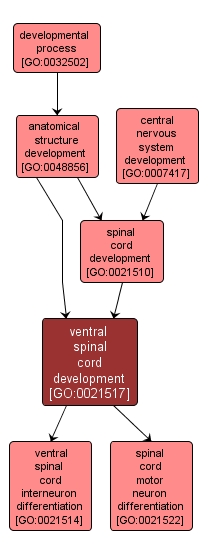GO TERM SUMMARY
|
| Name: |
ventral spinal cord development |
| Acc: |
GO:0021517 |
| Aspect: |
Biological Process |
| Desc: |
The process whose specific outcome is the progression of the ventral region of the spinal cord over time, from its formation to the mature structure. The neurons of the ventral region of the mature spinal cord participate in motor output. |
|

|
INTERACTIVE GO GRAPH
|














